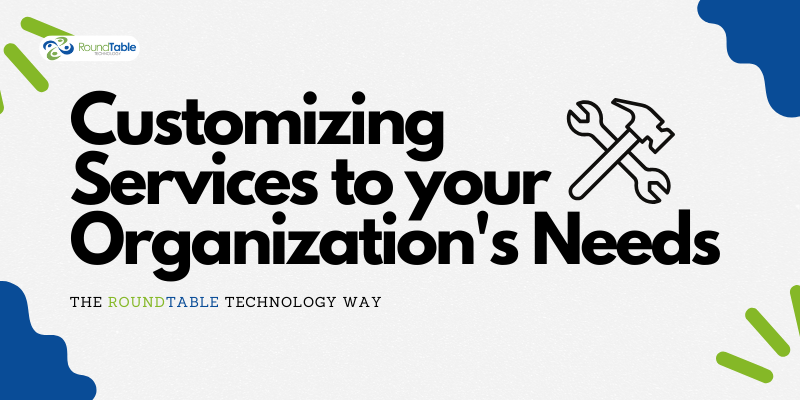Project Management Insights for Nonprofit Technology Initiatives
In the dynamic and purpose-driven world of nonprofit organizations, the convergence of passion and practicality is crucial, particularly when it...
3 min read
Hank Dequina : Nov 29, 2023 2:40:00 PM
.png)
In the realm of IT services, particularly for Managed Service Providers (MSP), Service Level Agreements (SLAs) stand as the backbone of client-provider relationships. An SLA is not just a document but a testament to mutual commitment, outlining the scope of services, quality standards, and expectations between an MSP and their client.
An SLA, or Service Level Agreement, is a contract between a service provider and its customers that defines the level of service expected from the service provider. SLAs are output-based in that their purpose is specifically to define what the customer will receive.
The inception of SLAs marked a pivotal moment in the IT industry. Originating from the need to define clear and measurable service parameters, SLAs have evolved into comprehensive contracts that do more than just list services. They are foundational in establishing transparent expectations, thus bridging the gap between client hopes and service realities. This clarity is crucial in an industry where ambiguity can lead to dissatisfaction and operational inefficiencies.
SLAs go beyond mere contractual obligations; they are a reflection of trust and reliability. For clients, an SLA provides a sense of security, knowing that their IT needs are not just understood but also quantifiably measured and guaranteed. For providers, these agreements offer a framework to showcase their commitment to quality and efficiency, setting the stage for long-term client relationships.
In the dynamic landscape of technology, where changes are rapid and constant, SLAs have had to adapt. From the traditional metrics like uptime and response time, today's SLAs encompass broader aspects like data security, compliance standards, and even innovation in service delivery. This evolution signifies a shift from a transactional to a more holistic approach in IT service management, aligning more closely with the evolving needs and complexities of modern businesses.
The importance of SLAs in the IT industry cannot be overstated. They are not just contracts but strategic tools that foster trust, ensure quality, and drive the continuous improvement of IT services. As the industry continues to evolve, the role of SLAs will undoubtedly expand, further cementing their status as indispensable elements in the world of IT services.
While Service Level Agreements are fundamental in structuring IT services, their limitations become apparent when they fail to fully encompass the fluidity of real-world client needs. This part of the article delves into the constraints of SLAs and how they sometimes fall short in the dynamic IT landscape.
One significant limitation of SLAs is their tendency to focus on quantifiable metrics, such as uptime, response times, and resolution rates. While these metrics are essential, they often overshadow qualitative aspects of service, like customer satisfaction and personalized support. For instance, an MSP might meet all the SLA metrics but still leave the client feeling underserved due to a lack of tailored solutions or proactive communication.
Case studies in the IT sector reveal instances where the rigidity of SLAs led to strained client-provider relationships. A notable example is when a financial firm's critical system faced an outage. While the MSP responded within the SLA-specified timeframe, the lack of immediate, effective action prolonged the system's downtime, leading to significant business losses. This scenario underscores that adherence to SLA terms doesn't always equate to successful outcomes or client satisfaction.
Furthermore, the evolving nature of technology and business needs challenges the static nature of many SLAs. As new technologies emerge and client expectations shift, SLAs can become outdated, leaving gaps in service coverage and expectations. This misalignment is particularly evident in areas like cybersecurity, where the rapid evolution of threats requires a more adaptive and responsive service approach than what traditional SLAs might offer.
In contrast to traditional Service Level Agreements, we at RoundTable Technology attempt a progressive approach in the IT service industry, prioritizing client satisfaction and adaptability over rigid contract metrics.
Our philosophy revolves around the belief that quality IT service extends beyond the confines of predefined SLAs. Instead of a one-size-fits-all approach, they advocate for personalized service, treating each client issue with equal urgency and importance. This methodology ensures that every client, regardless of their issue's SLA classification, receives immediate and effective attention. For example, our response to IT issues is not bound by tiered service levels; whether it's a minor glitch or a critical system failure, each client receives an ASAP response.
A key component of our model is its voluntary client satisfaction rating system and feedback mechanism for every closed ticket. This practice allows for direct follow-up on any feedback, fostering continuous improvement and client-centric service adaptation. We display live satisfaction scores on our website, in order to demonstrate a commitment to transparency and service excellence.
Looking at broader industry trends, there's a growing shift towards such flexible, client-focused IT service models. As technology rapidly evolves and businesses face increasingly complex IT challenges, the limitations of traditional SLAs become more pronounced. Clients now seek providers who can offer more than just adherence to service metrics; they value responsiveness, customization, and proactive support.
The exploration of SLAs in the IT service industry reveals a need for a balance between structured service delivery and flexibility to adapt to client needs. While SLAs provide a foundation for clear expectations and measurable service standards, their limitations become evident in their rigidity and inability to fully cater to evolving client requirements. Our client-centric approach highlights the growing industry trend towards more adaptable and responsive service models. This shift is crucial in the ever-evolving technological landscape, where client satisfaction and tailored services are becoming increasingly paramount.

In the dynamic and purpose-driven world of nonprofit organizations, the convergence of passion and practicality is crucial, particularly when it...

In the fast-paced, ever-evolving world of technology, one size does not fit all – especially in the nonprofit sector. Organizations operating in this...

Navigating the intricate web of technology and cybersecurity can often feel like steering through a labyrinth without a map. At RoundTable...